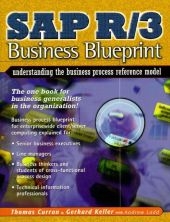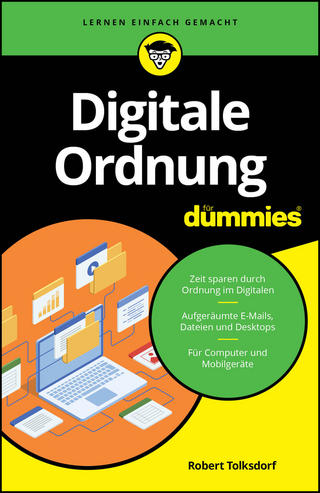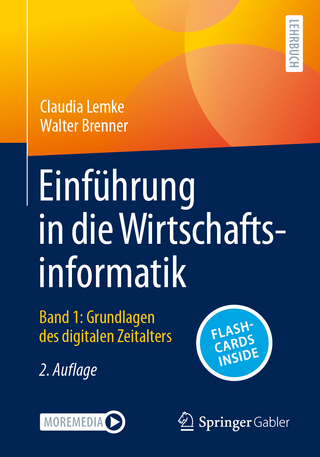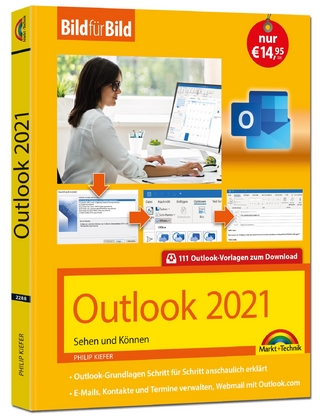
SAP R/3 Business Blueprint
Prentice Hall (Verlag)
978-0-13-085340-0 (ISBN)
- Titel ist leider vergriffen;
keine Neuauflage - Artikel merken
Using SAP's leading enterprise software product R/3 as a backdrop, the book clearly demonstrates how common business process can be defined and then reengineered for maximum value. This new edition explains SAP's latest R/3 releases and strategic initiatives in language that's easy to understand and apply. It begins with a Business Engineering section that sketches the "big picture" for high-level decision makers, helping them understand the major features and tools of the latest R/3 release, and the key issues associated with its implementation. Next, the Process Design section introduces R/3's applications in specific fields such as sales, production, finance, and human resources. Finally, the Architecture, Framework, and Tools section provides up-to-date, detailed implementation help for IT professionals.
Thomas Curran is President of Component Software (Cambridge, MA), which produces desktop ERP applications. He worked for five years as technology strategist for SAP AG. Andrew Ladd is Director of Communications for Component Software, Inc., for whom he was written numerous white papers and technical documents.
I. BUSINESS ENGINEERING.
1. Business Engineering and Enterprise Optimization.
Significance of Business Engineering. Principles of Business Engineering. Elements of Business Engineering. Requirements for Successful Implementation of Business Engineering. IT Implementation Issues. Effects of Integration of Information Technology. Evolution of Information Technology. Client/Server Technology. Benefits of Client/Server Technology. SAP™ and Client/Server Technology. Beyond Business Engineering. Continuous Engineering. Supply Chain Management. Desktop ERP. Conclusion.
2. The Business Blueprint.
Pros and Cons of Business Blueprints. General Design of the R/3™ Blueprint. Focus of the R/3™ Blueprint. Event-Driven Process Chain Methodology. Describing Complex Business Processes. Ordering Toner. Recruiting a New Employee. Planning a Seminar. EPC Methodology and Viewpoints in the R/3™ Reference Model. Reference Model Viewpoints—Car Dealership. The Component Model—What Happens? The Organizational Model—Who Does What? The Data Model—What Is Needed? The Interaction Model—How Do Company Models Interact? Summary.
3. Configure to Order.
Standard Software Implementation Issues. Mapping with the Business Blueprint. Redlining the Blueprint. Extending the Business-Process Design. Conclusion.
II. PROCESS DESIGN.
4. Value Chain Thinking.
The Value Chain Principle. R/3™ and the Value Chain. Overview of Part 2: Value Chain Thinking.
5. Sales Logistics.
Standard Order Handling Scenario. Mailing Campaign Processing. Sales Activity Processing. Customer RFQ Processing. Customer Quotation Processing. Standard Order Processing. Delivery Processing. Goods Issue Processing for Stock Material. Billing. Contract Handling and Scheduling Agreements. Third-Party Order Handling. Customer Consignment Stock Handling. Cash Order Handling. Rush Order Handling. Make-to-Order Sales Order Handling. Assembly-to-Order Sales Order Handling. Empties and Returnable Packaging Handling. Returns Handling. Decentralized Shipping. R/3 Sales Logistics Summary.
6. Production Logistics.
Production by Lot Size. Processing of Sales and Operation Planning. Demand Management. Material Requirements Planning (Single-Item MPS). Creation, Release, and Execution of Production Order. Repetitive Manufacturing. Make-to-Order Production. Process Manufacturing. Project-Related “Engineer to Order.” Quality Management for Goods Receipt from Production. R/3 Production Logistics Summary.
7. Procurement Logistics.
Procurement of Stock Material. Material Requirement Planning. Requisition Processing to Stock Material. Processing of RFQ Issued to Vendor. Vendor Quotation Processing. Purchase Order Processing for Stock Material. Goods Receipt Processing. Procurement of Consumable Materials. Procurement of Consignment Materials. Procurement of Subcontract Work. Stock Transfer Processing. External Services Management. R/3™ Procurement Logistics Summary.
8. External Accounting.
Vendor Handling. Vendor Master Record Processing. Vendor Invoice Processing. Down Payment Release. Automatic Payment. Manual Payment. Customer Processing. OTA Vendor Processing. Creditor Subsidiary/Head-Office Processing. General Ledger Processing. Special-Purpose Ledger Handling. Consolidation. R/3™ External Accounting Overview.
9. Organization and Human Resource Management.
Recruitment. Creating a Search. Tracking the Search Process. Job Description. Employee Application Processing. Confirming the Application Receipt. Preliminary Personnel Choice. Personnel Processing. Employment Agreement Offer Processing. Applicant Status Check. Preparation for Employing the Applicant. Rejection of Offer. Applicant Pool Administration. Putting an Application on Hold. Rejection of Application. Business Event Handling. Business Trip Management. Time Management Handling. International Payroll Processing. Salary Administration. Benefits Administration. Personnel Planning and Management. R/3 Procurement Logistics Overview.
10. Business Planning and Controlling.
Cost Object Controlling. Production Order Preliminary Costing. Production Order Simultaneous Costing. Period-End Closing and Final Costing. Profitability Analysis. Profit Center Accounting. Overhead Cost Management. R/3™ Business Planning and Controlling Summary.
11. Capital Asset Management.
Planned Plant Maintenance. Maintenance Plan Processing. Maintenance Plan Scheduling. Maintenance Call Processing. Maintenance Order Creation and Processing. Maintenance Order Release. Maintenance Order Execution. Maintenance Order Completion Confirmation. Maintenance Order Settlement. Damage-Related Maintenance Processing. Project-Based Maintenance Processing. Cash Management. Budgeting. Fixed Asset Processing. Leased Asset Processing. R/3™ Capital Asset Management Summary.
12. Finance Management.
Treasury Management. Fixed-Term Deposit Processing (Money Market/Foreign Exchange/Derivatives Trading). Product Type Selection. Fixed-Term Deposit Processing. Rollover. Correspondence. Settlement in Treasury. Netting Processing. Posting Approval in Treasury. Posting in Treasury. Accrual. Key Date Valuation. Realized Profits/Losses. Treasury Master Data Scenario. New Security Management. Treasury. Treasury Information System. Cash Management. Market Risk Management. R/3™ Finance Management Summary.
13. Customer Service.
Field Service. Recording and Processing Service Notifications. Opening and Processing Service Orders. Service Order Release. Service Order Completion Confirmation. Technical Results Recording. Resource-Related Billing and Invoice Processing. Service Order Settlement. Long-Term Service Agreements. In-House Repair Processing. Replacement Part Delivery Processing. Notification Receipt and Processing. Evaluations. R/3™ Customer Service Summary.
III. ARCHITECTURE, FRAMEWORK, AND TOOLS.
14. Architecture of the R/3™ System.
R/3™ and the Distributed Environment. The Three-Tier Client/Server R/3™ Architecture. Benefits of the R/3™ Three-Tier Client/Server. Interprogram Communication. Middleware Transaction Management. Rationale for Distributed Business-Process Integration. Capabilities of Application Distribution in R/3™. Tools for Application Distribution. Model-Based Application Distribution. Distribution Reference Model. Using the Business Blueprint for Application Integration. Conclusion.
15. R/3™ Framework and Infrastructure.
Background of Business Integration. SAP™ Business Framework. Configuration of Enterprise Applications. Rationale for the Business Framework. Repository as Integrating Factor. Business Processes. Business Objects. Data Models. Object-Oriented Interfaces. Business Components. Enterprise Application Development. ABAP/4 Development Workbench. Development Workbench Features. Conclusion.
16. Business Engineering in R/3™.
R/3™ Business Engineer Overview. Business Engineer and Streamlined Implementations. Modeling the Distributed Enterprise. Application Components. Session Manager. Enterprise Organization. Using the R/3™ Reference Model. Business Object Model. Object-Oriented Data Model. Business Process Model. Workflow Model. Guideline for Implementing R/3™. Project Management Procedure Model. AcceleratedSAP™. The Roadmap. Tools. R/3™ Services and Training. Phase 1: Project Preparation. Phase 2: Business Blueprint. Phase 3: Realization. Phase 4: Final Preparation. Phase 5: Go Live and Support Continuous Change. Workflow and Personnel Organization. Open Repository Interface. Business Engineer: Future Vision.
17. Next Generation Enterprise.
What Is Internet ERP? Next Generation Application Components. The Industry Reference Model, Process Configuration, and Vertical Markets. Supply Chain Optimization, Planning, and Execution. Enterprise Application Integration. Business Object Integration Model. Business Process Integration Models. Electronic Commerce. Desktop ERP: Automating the Way People Work. Improved Browsers. Desktop ERP. Autonomous Software Agents. Conclusion.
Index.
| Erscheint lt. Verlag | 9.9.1999 |
|---|---|
| Verlagsort | Upper Saddle River |
| Sprache | englisch |
| Maße | 100 x 100 mm |
| Gewicht | 100 g |
| Themenwelt | Informatik ► Office Programme ► Outlook |
| Informatik ► Weitere Themen ► Hardware | |
| Mathematik / Informatik ► Mathematik ► Finanz- / Wirtschaftsmathematik | |
| ISBN-10 | 0-13-085340-2 / 0130853402 |
| ISBN-13 | 978-0-13-085340-0 / 9780130853400 |
| Zustand | Neuware |
| Informationen gemäß Produktsicherheitsverordnung (GPSR) | |
| Haben Sie eine Frage zum Produkt? |
aus dem Bereich


